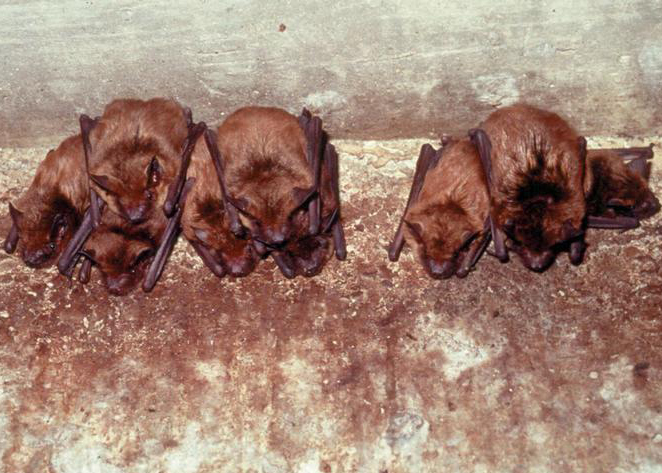Bats
Chiroptera
Identification
- wingspan ranges from a few inches to 17 inches
- 18 species in Utah
Nesting Habits
- caves and mines, tree foliage, hollow trees, cracks in rock cliffs and buildings
- some live in Utah year-round; some are migratory
Diet
- insects
Significance
- major disruptor to building occupants
- health hazard: could transmit histoplasmosis and rabies
IPM Recommendations
- Do NOT kill bats; they are protected by law!
- Do NOT seal cracks and crevices when bats and their young are present (late May - late July).
- Exclude bats: seal exterior cracks, crevices and areas around pipes and electrical that enter through walls.
- Exclude bats: use netting that allows bats to leave structures but blocks them from re-entering the building.
- Construct bat boxes as an alternative roosting site.
- Keep all exterior doors and windows closed.
- Keep screens in good repair.
- Avoid leaving gaps in construction where bats can roost.
- Seal all cracks and crevices where bats may enter a building. This may take great effort and special equipment.
- Use the presence of guano (bat feces) and grease markings on siding, etc., to find openings that need exclusionary measures taken.
- Never handle bats with bare hands.




